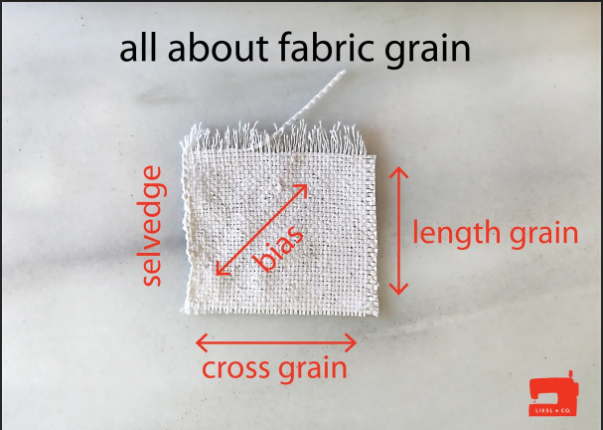There is so much talk of fabric grains and cutting directions, but how do you *find* them? How do you know what they are without a formal education in textiles? Fortunately, it’s very simple. Lets go:

The grainline is the direction of the fabric’s weave or threads, which is indicated on sewing patterns as a straight line with arrows. It’s usually parallel to the selvage edge of the fabric. To find the grainline, fold the fabric in half lengthwise with selvages aligned, and then align the folded edge with the grainline on the pattern. The fabric should be smooth and free of wrinkles. Pin the pattern to the fabric and cut along the grainline.
The crosswise grain runs perpendicular to the selvage edge and is the second most stable direction after the grainline. To find the crosswise grain, fold the fabric in half widthwise, perpendicular to the selvage edge. The fold line is the crosswise grain. It’s important to note that the crosswise grain has more stretch than the lengthwise grain.
The bias grain runs diagonally across the fabric at a 45-degree angle to both the lengthwise and crosswise grains. Cutting on the bias allows the fabric to drape more fluidly and is often used in garments such as bias-cut skirts and dresses. To find the bias, fold the fabric diagonally, aligning the selvage edges, to create a right angle. The fold line is the bias grain.
And that’s it! That’s the secret to finding the fabric grain.

Leave a Reply
You must be logged in to post a comment.